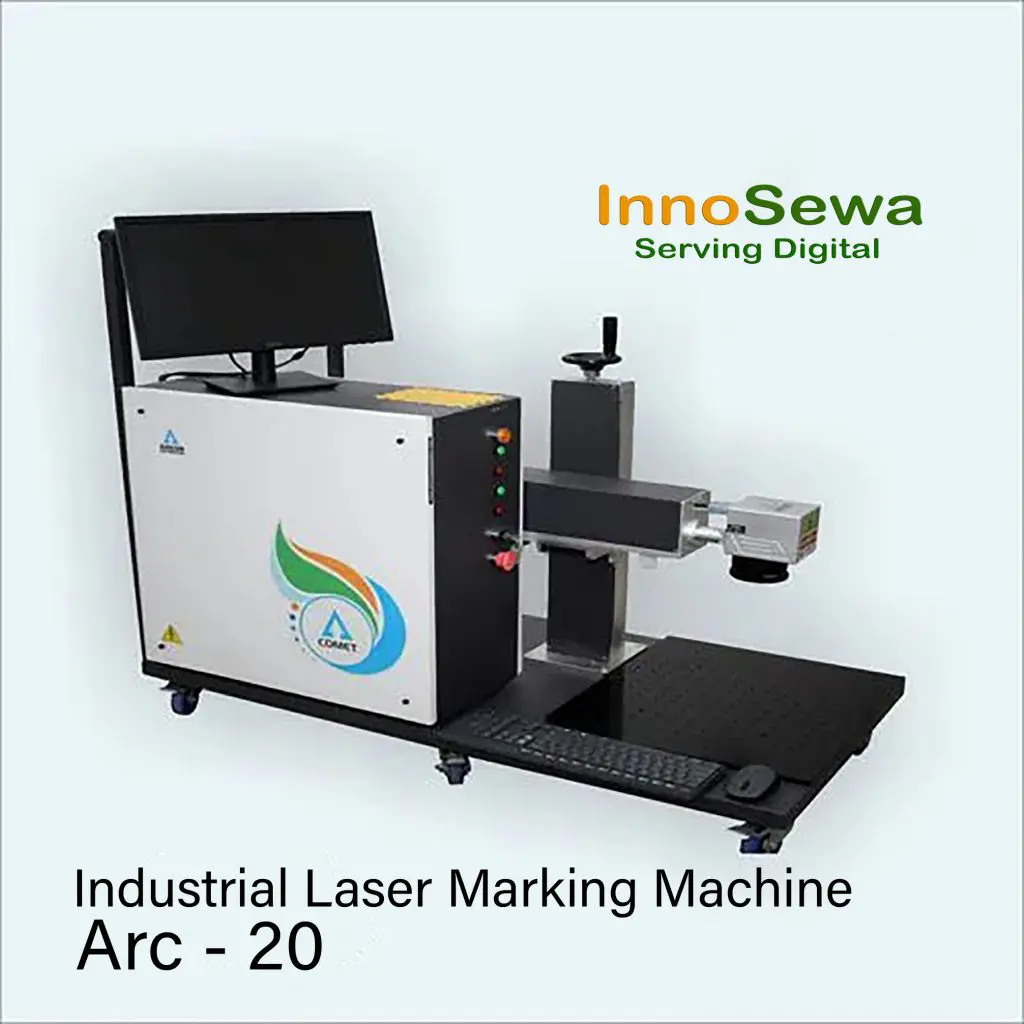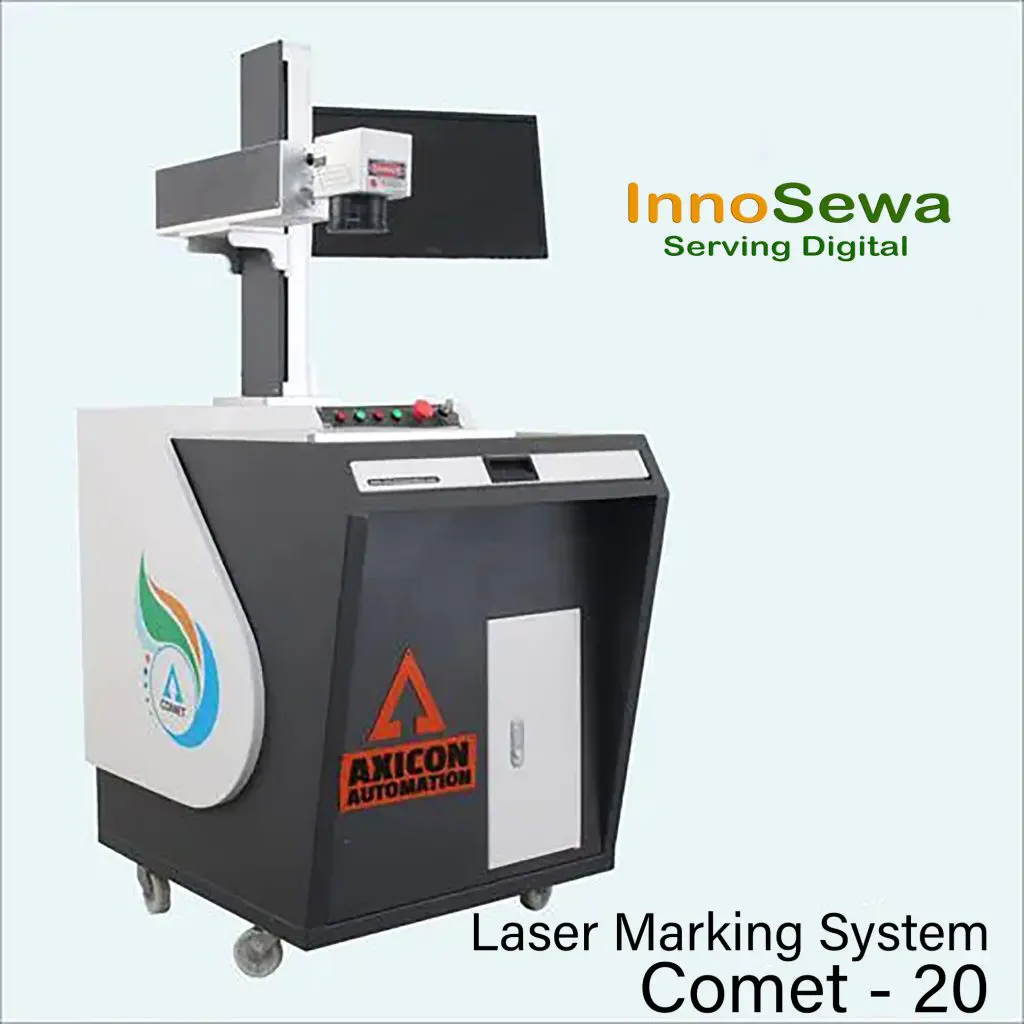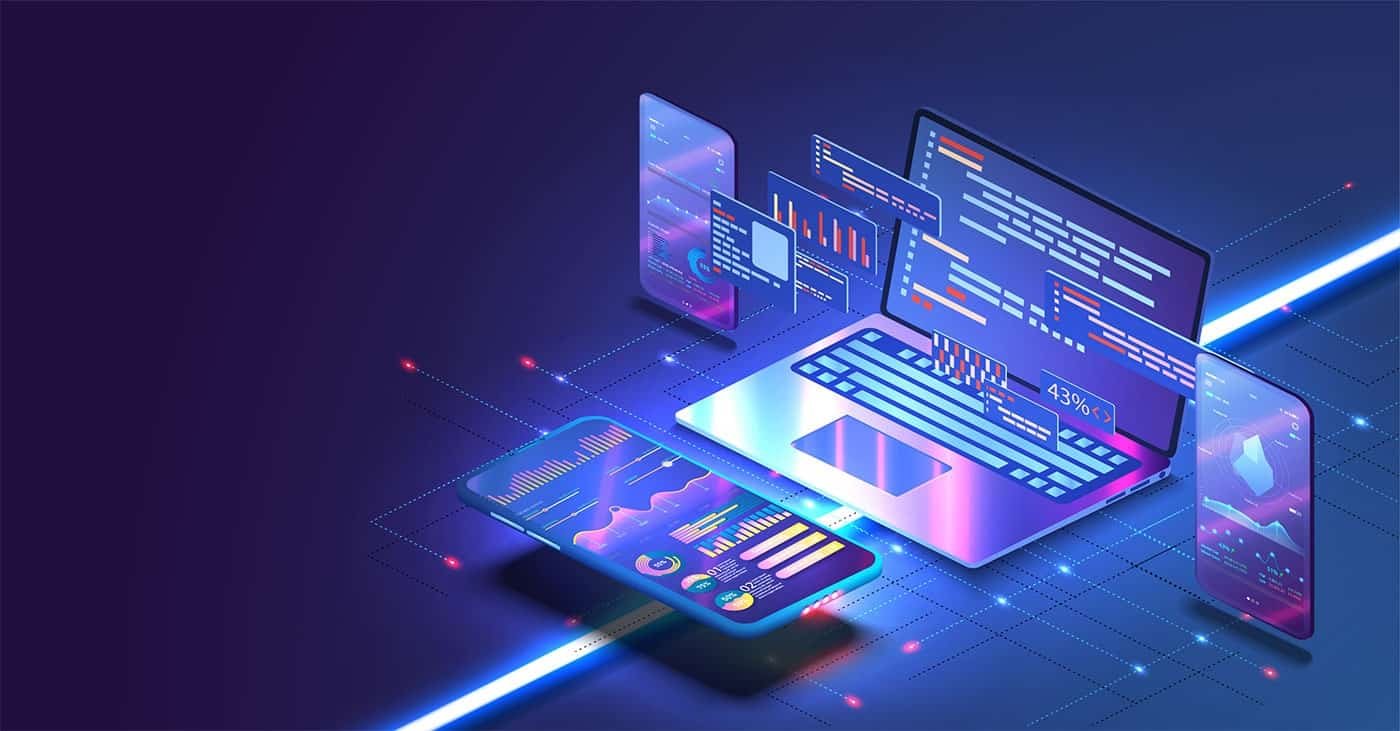InnoSewa, is a Digital Services company helping clients in Digital Transformation & Automation. We constantly make every effort to provide best services to our clients along with making ways for youth to involve into mainstream.
Read MoreLaser Marking Machines Introduction





Laser engraving, using Laser Marking Machines is the practice of using lasers to engrave an object. Laser marking, on the other hand, is a broader category of methods to leave marks on an object, which also includes color change due to chemical/molecular alteration, charring, foaming, melting, ablation, and more. The technique does not involve the use of inks, nor does it involve tool bits which contact the engraving surface and wear out, giving it an advantage over alternative engraving or marking technologies where inks or bit heads have to be replaced regularly.
Types of Lasers Used in Laser Marking Operations

- Gas lasers. These lasers use a gas mixture—typically CO2 or a helium-neon compound—as their medium for emitting light. They accommodate organic materials but do not offer as much precision as solid-state or fiber lasers.
- Solid-state lasers. These lasers commonly use neodymium: yttrium aluminum garnet (Nd: YAG) as a medium and are often utilized in beam-steered laser marking applications. They offer faster marking operations but at a much higher price point.
- Fiber lasers. These lasers use rare earth elements, such as Erbium and Ytterbium, to spontaneously emit light. They are best suited to use with inorganic materials and for high-volume industrial applications.
Types of Laser Marking Methods
There are many laser marking variations available. The four most popular methods are:
- Annealing laser marking. This process oxidizes the surface to create precise black markings with a smooth finish. It can sometimes produce colored markings depending on how the surface material reacts to the heat.
- Carbon migration laser marking. In carbon migration, the laser brings carbon characteristics to the surface of the material. This process results in a dark—often black—marking. Compared to the annealing method, it offers much faster marking operations.
- Coloration laser marking. This process adds color to the product material. It uses a foaming process and lasers with a precise pulse frequency to create designs of different colors.
- Foaming laser marking. This process creates a lighter-colored molten burn on the surface of plastics. It can create highly visible markings on dark plastics by making the surface bubble along the markings.
Benefits of Laser Marking
Compared to other marking techniques, laser marking offers many advantages, such as:
- Smaller environment footprint. Laser marking doesn’t use excessive materials or chemicals, making it a greener alternative to other part and product labeling and marking processes.
Greater durability. Since the laser marks are etched or burned onto the substrate, they can’t be washed off accidentally. The marks are also resistant to solvents. - Broader versatility. Companies can choose whether the laser markings are permanent or semi-permanent depending on the nature of the information. For example, safety rating information can be permanently marked onto products, while decorative elements can be semi-permanent. Additionally, the process can be used on a variety of substrates, ranging from metals and alloys to plastics, fabrics, and paper, for marking many different designs.
- Lower levels of surface damage. Aside from the burned or chemically altered markings themselves, the laser marking process doesn’t cause any physical changes in the substrate. It also won’t subtract material from the object.
- Faster operations. The laser technology employed allows for quick generation of markings, making the laser marking process well-suited for high-volume orders.
Higher precision and accuracy. The laser marking process is precise, accurate, and can handle fine detailing requirements.
All of these qualities translate into significant benefits for companies that choose laser marking over other processes. Unlike alternative engraving or cutting methods, laser marking won’t remove material from the objects. It also offers more flexibility than etching and engraving processes, both in terms of the substrates that can be used and the permanence of the marks.
Applications for Laser Marking
The laser marking process finds application in a wide of industries, including in the following:
- Aerospace. The aerospace industry employs a variety of critical equipment that requires a clear indication of safety information and ratings. Permanent laser marks offer a solution that won’t wear off due to extreme conditions or wear.
- Agriculture and Dairy. Industry professionals in the agricultural industry use a variety of marking and branding processes on their products. The markings they make facilitate the tracking of goods during production and processing stages and prepare finished products for retail.
- Automotive. In automotive facilities, fiberglass and metal parts need to be uniquely identifiable. Laser markings serve as a method of marking them with serial numbers that won’t damage the substrates or affect their structural integrity.
- Biomedical and Biopharmaceutical. In these industries, it’s important to have very clear markings on sensitive or potentially hazardous products that won’t alter their nature or performance.
- DOT/DOD/DO. Laser markings can help label, track, and organize large quantities of material that are distributed around the world.
- Electronics. Laser markings allow for clear identification of critical parts and components without altering or interfering with their finely tuned operation or performance.
- Firefighting and Safety Equipment. Safety equipment is required to indicate the manufacturer’s information, ratings and regulations, warnings, user instructions, and other important product data. The laser marking process ensures this information remains clearly marked to ensure the safety of rescue personnel and rescuees.
- Heavy Machinery and Hydraulics. Industrial equipment is often subjected to harsh operational and environmental conditions that cause wear. Laser markings can withstand these conditions much better than stickers and other additive labeling methods.
- Medical. Laser marks distinctly identify medical equipment without changing the item or creating a surface texture that increases the risk of corrosion or contamination.
Military and Defense. Laser marks facilitate the tracking of equipment and components shipments. - Oil and Gas. Oil and gas processing operations are tough on equipment. Permanent laser marks can withstand solvents, high temperatures, and other adverse environmental factors.
Professional Turf and Lawn Care. In the landscaping industry, laser marks are used to identify everything from equipment to rolls of sod. - Recreational Marine. Saltwater is highly corrosive. Laser markings can withstand both saltwater and freshwater environments.
The above industries, among others, commonly use the laser marking process for the following:
- Asset tracking. Companies can scan laser-marked barcodes at every stop along their supply chain to track the movement of goods from one location to the next.
- Branding. Both semi-permanent and permanent markings designs make products recognizable and can improve their aesthetic quality, making them more attractive to consumers.
- Part and product identification. The laser marking process can be used to indicate unique serial numbers, model names, and more on finished products for identification purposes.
- Security. Permanent marks on sensitive materials allow companies to identify and recover goods in the event of theft.
- Tracing. End-users with laser-marked equipment can trace it back to manufacturers or service providers for repair and maintenance operations.
Materials Worked in Laser Marking Operations
Laser marking accommodates a variety of materials, including:
- Metals such as aluminum, brass, bronze, copper, steel, and stainless steel
- Plastics such as ABS, polystyrene, and PVC
- Inorganics such as glass, gemstones, and stone
- Organics such as leather, paper, and wood
Laser Marking Services at InnoSewa
InnoSewa offers high-quality laser marking services. Our facility is equipped with gas laser, solid-state laser, and fiber laser technology to accommodate a wide range of laser marking needs. We commonly provide the following markings on customer parts and products:
- Part identification numbers
- Brand names
- Traceability lots
- Production dates
- Serial numbers
For more information on our laser marking capabilities, visit our laser marking page or drop us a email on info@innosewa.com





